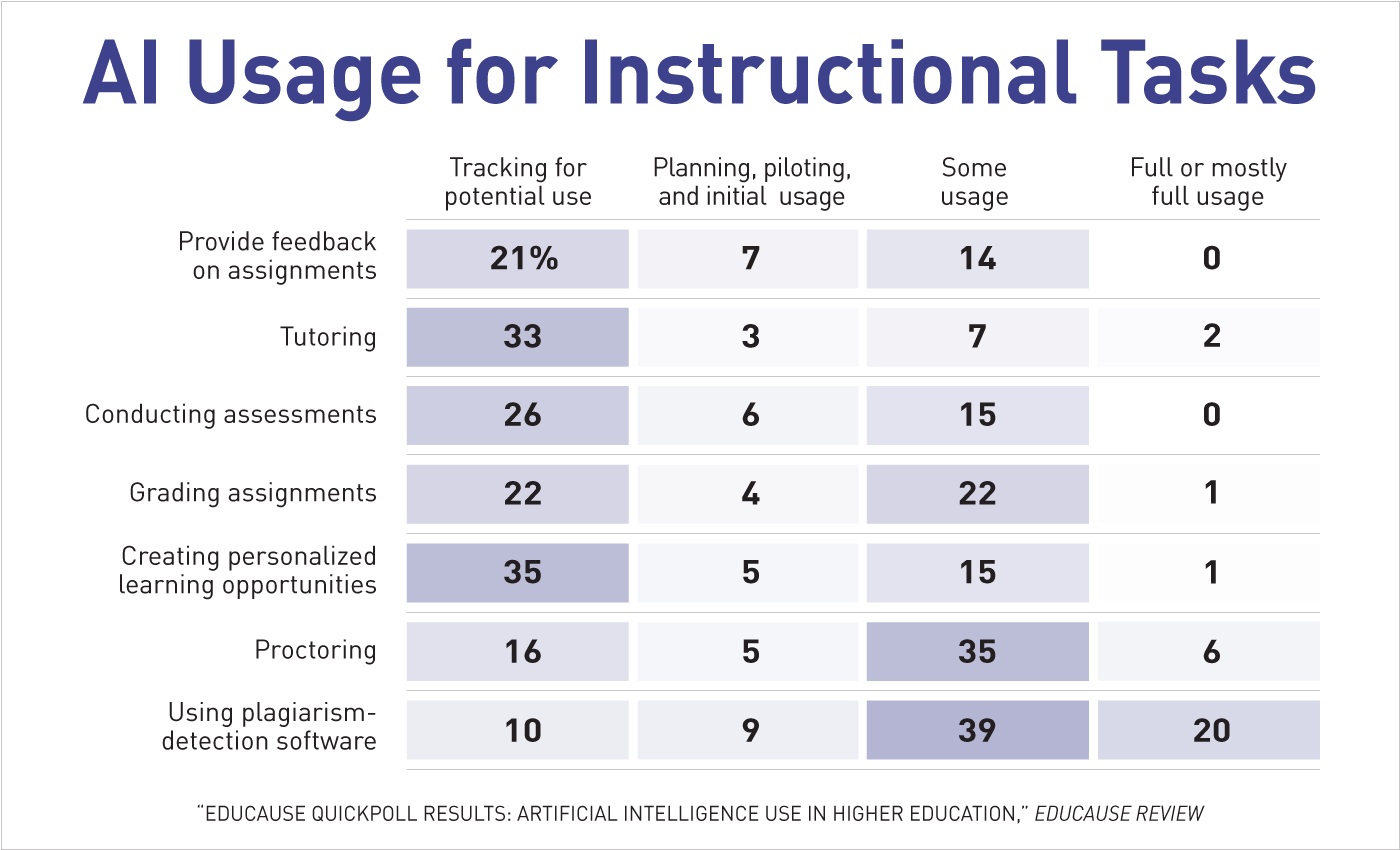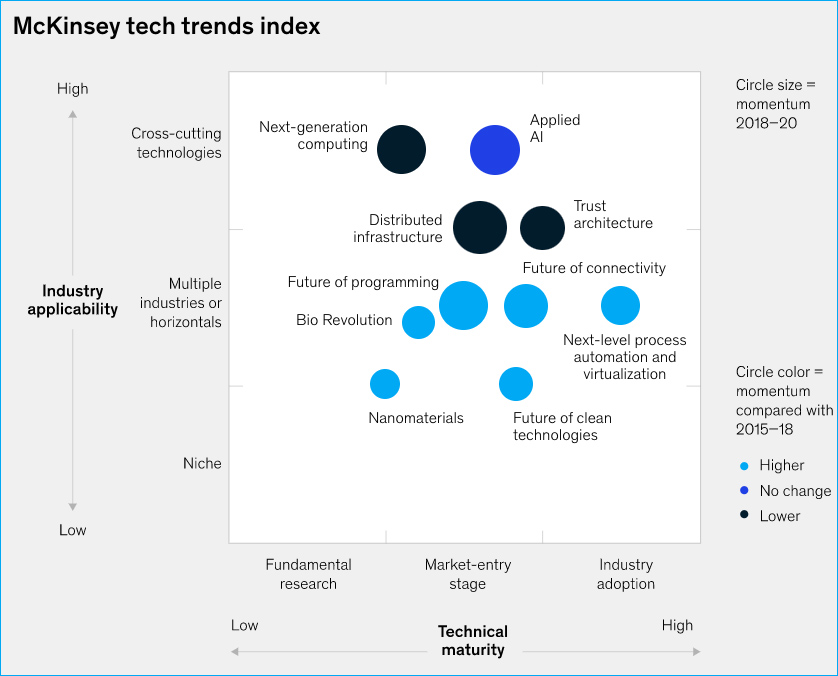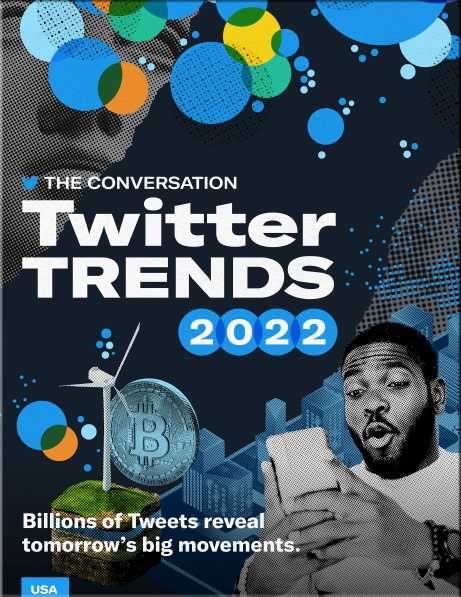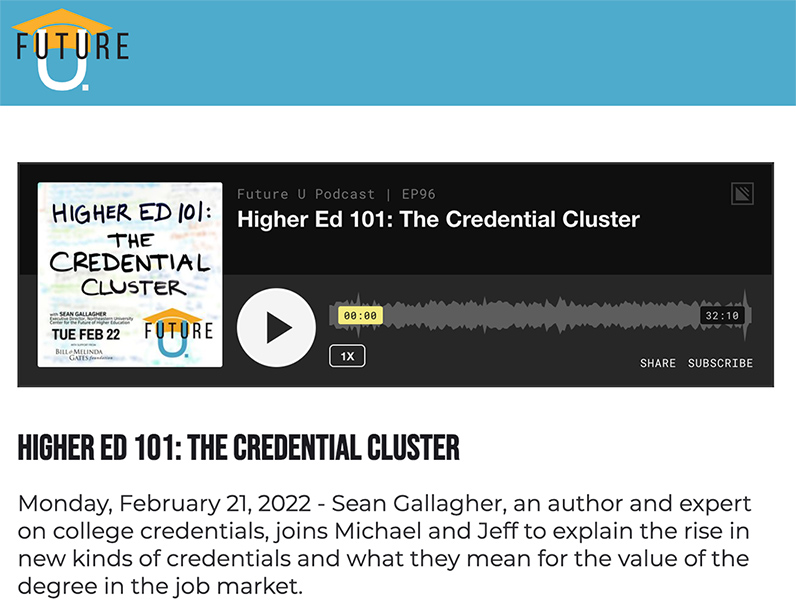The future of video entertainment: Immersive, gamified, and diverse — from mckinsey.com
“There’ll be a blurring of the lines between things we watch and things we play”
Coursera’s Global Skills Report
Excerpt from the Executive Summary:
Here are some of our top findings:
- Digital skills are the shared language of the modern economy.
- Women’s participation continued to rise.
- The developing world had the highest rate of learner growth.
- Lower levels of internet access mean lower levels of skills proficiency.
- Courses in human skills had more learners from developed countries, while those in digital skills had more from developing ones.
- The U.S. held steady in its overall skills proficiency ranking—yet it lost meaningful ground in core technology and data science skills.
- Europe leads the world in skills proficiency.
- Proficiency in technology and data science skills varies widely across the Asia-Pacific region.
- Learners used Coursera to understand the pandemic.
Every month Essentials publish an Industry Trend Report on AI in general and the following related topics:
- AI Research
- AI Applied Use Cases
- AI Ethics
- AI Robotics
- AI Marketing
- AI Cybersecurity
- AI Healthcare
The Race to Hide Your Voice — from wired.com by Matt Burgess
Voice recognition—and data collection—have boomed in recent years. Researchers are figuring out how to protect your privacy.
AI: Where are we now? — from educause.edu by EDUCAUSE
Is the use of AI in higher education today invisible? dynamic? perilous? Maybe it’s all three.
What is artificial intelligence and how is it used? — from europart.europa.eu; with thanks to Tom Barrett for this resource

AI: Where are we now? — from educause.edu by EDUCAUSE
Is the use of AI in higher education today invisible? dynamic? perilous? Maybe it’s all three.

Also see:
Also relevant/see:
What technology trends will—and should—lead business agendas in 2022? — from mckinsey.com
Excerpt:
Metaverse. Web3. Crypto. 5G.
These are just a few of the technologies grabbing headlines at the start of 2022. But what technology trends truly sit atop business agendas this year? Which might be under executives’ radars but should be surfaced? And what should business leaders keep in mind as they consider these trends?
We asked some members of the McKinsey Technology Council, a group of global experts convened to assess, track, and debate real emerging trends in business and technology, for their perspectives on these questions. Specifically, we asked the following:
- What technology trend do you predict will headline business agendas for the remainder of 2022 and why?
- What technology trend do you think is under businesses’ radars but merits more of executives’ attention?
- What’s one piece of advice you would give to business leaders as they consider incorporating new technologies into their business?
Also relevant/see:
The top trends in tech — from mckinsey.com
Which technologies have the most momentum in an accelerating world? We identified the trends that matter most.
Marketing in the metaverse: An opportunity for innovation and experimentation — from mckinsey.com
Although widespread adoption of the metaverse may take some time, leading brands are already rewriting the rules of marketing.
Marketers would be remiss if they didn’t start exploring what the metaverse can offer. Now is the right time to adopt a test-and-learn mindset, to be open to experiments, and to move on quickly from failure and capitalize on success.
From DSC:
And not just marketers. How about teachers, professors, trainers, and instructional designers?
#Metaverse #learningfromthelivingclassroom #learningecosystems #learning #training #education #K12 #highereducation #vocations #careers #corporatetraining #learninganddevelopment
Radar trends to watch: May 2022 — from oreilly.com
Developments in Web3, Security, Biology, and More
Excerpt:
April was the month for large language models. There was one announcement after another; most new models were larger than the previous ones, several claimed to be significantly more energy efficient.
12 examples of artificial intelligence in everyday life — from itproportal.com by Christopher Oldman
Excerpt:
4. Plagiarism
The college students’ (or is it professor’s?) nightmare. Whether you are a content manager or a teacher grading essays, you have the same problem – the internet makes plagiarism easier.
There is a nigh unlimited amount of information and data out there, and less-than-scrupulous students and employees will readily take advantage of that.
Indeed, no human could compare and contrast somebody’s essay with all the data out there. AIs are a whole different beast.
They can sift through an insane amount of information, compare it with the relevant text, and see if there is a match or not.
Furthermore, thanks to advancement and growth in this area, some tools can actually check sources in foreign languages, as well as images and audio.
Intel calls its AI that detects student emotions a teaching tool. Others call it ‘morally reprehensible.’ — from protocol.com by Kate Kaye
Virtual school software startup Classroom Technologies will test the controversial “emotion AI” technology.
Excerpts:
But Intel and Classroom Technologies, which sells virtual school software called Class, think there might be a better way. The companies have partnered to integrate an AI-based technology developed by Intel with Class, which runs on top of Zoom. Intel claims its system can detect whether students are bored, distracted or confused by assessing their facial expressions and how they’re interacting with educational content.
…
But critics argue that it is not possible to accurately determine whether someone is feeling bored, confused, happy or sad based on their facial expressions or other external signals.
…
The classroom is just one arena where controversial “emotion AI” is finding its way into everyday tech products and generating investor interest. It’s also seeping into delivery and passenger vehicles and virtual sales and customer service software.
MIT’s FutureMakers programs help kids get their minds around — and hands on — AI — from news.mit.edu by Kim Patch
The programs are designed to foster an understanding of how artificial intelligence technologies work, including their social implications.
Excerpt:
During one-week, themed FutureMakers Workshops organized around key topics related to AI, students learn how AI technologies work, including social implications, then build something that uses AI.
“AI is shaping our behaviors, it’s shaping the way we think, it’s shaping the way we learn, and a lot of people aren’t even aware of that,” says Breazeal. “People now need to be AI literate given how AI is rapidly changing digital literacy and digital citizenship.”
AI can now kill those annoying cookie pop-ups — from thenextweb.com by Thomas Macaulay
The notifications have been put on notice
Excerpt:
After years of suffering this digital torture, a new AI tool has finally offered hope of an escape.
Named CookieEnforcer, the system was created by researchers from Google and the University of Wisconsin-Madison.
The system was created to stop cookies from manipulating people into making website-friendly choices that put their privacy at risk. Yet it could also end the constant hassle of navigating the notices.
Using machine learning to improve student success in higher education — from mckinsey.com
Deploying machine learning and advanced analytics thoughtfully and to their full potential may support improvements in student access, success, and the overall student experience.
Excerpt:
Yet higher education is still in the early stages of data capability building. With universities facing many challenges (such as financial pressures, the demographic cliff, and an uptick in student mental-health issues) and a variety of opportunities (including reaching adult learners and scaling online learning), expanding use of advanced analytics and machine learning may prove beneficial.
Below, we share some of the most promising use cases for advanced analytics in higher education to show how universities are capitalizing on those opportunities to overcome current challenges, both enabling access for many more students and improving the student experience.
Artificial intelligence (AI): 7 roles to prioritize now — from enterprisersproject.com by Marc Lewis
Which artificial intelligence (AI) jobs are hottest now? Consider these seven AI/ML roles to prioritize in your organization
Excerpt:
Rather than a Great Resignation, this would suggest a Great Reallocation of the workforce. As a global search consultant, we are seeing this precipitous shift in positions, with great demand for skills in artificial intelligence and machine learning (AI/ML).
With that in mind, here are seven artificial intelligence (AI)-related roles to consider prioritizing right now as the workforce reallocates talent to new jobs that drive economic value for leading companies…
4 ways AI will be a great teaching assistant — from thetechedvocate.org by Matthew Lynch
2022 Outlook: 6 Legal Trends and Predictions to Have on Your Radar — from jdsupra.com by Vivian Susko
Excerpt:
In January, 2020, we made some bold predictions about what would lie ahead for legal operations in the new decade. Let’s dive back into some of our top forecasts, survey our new landscape, and see which legal trends are currently impacting the industry in 2022. Mitratech expert, Justin Silverman, weighs in on what you can expect to see on the horizon for legal ops.

Weighing the best strategies for reading intervention — from hechingerreport.org by Caralee Adams
Some schools are overhauling reading instruction and trying a variety of approaches to address the pandemic’s impact on learning
Excerpt:
But, some experts say, schools should also invest in deeper changes that tackle the root of the problem: Many teachers aren’t well versed in the science of reading and the best ways to teach to the widening range of abilities they are seeing in students.
Teachers need training on the science of reading research, guidance on leveraging data and ongoing support to help them target instruction.
The Skills Needed to Practice “New Law” — from abaforlawstudents.com by Ram Vasudevan
Excerpt:
…but proficiencies in technology, data and analytics, math and statistics, finance and budgeting, and large-scale project management are among the most valuable. Each of these skill sets now comes into play in the practice of law on a near-daily basis.
All these new legal competencies have in common the recognition that legal projects involve far more than legal skills. Too many lawyers, however, are still narrowly focused on the legal aspect of their work and are therefore missing out on a whole host of opportunities. Rising lawyers and law firm graduates who might have previously struggled to be part of the hiring conversation can now make themselves highly marketable by becoming experts in one or more of these areas and filling a pressing need in today’s legal organizations.
Also relevant/see:
- The Legal Tech Tools Clients Are Actually Using – TR Report — from artificiallawyer.com
The Future Trends Forum Topics page — from forum.futureofeducation.us by Bryan Alexander
Excerpt:
The Future Trends Forum has explored higher education in depth and breadth. Over six years of regular live conversations we have addressed many aspects of academia.
On this page you’ll find a list of our topics. Consider it a kind of table of contents, or, better yet, an index to the Forum’s themes.
Also see:
- 300 videos: the Future Trends Forum passes another milestone — from bryanalexander.org by Bryan Alexander
Since we launched in early February, 2016, the Forum has successfully published three hundred videos to YouTube. Week after week, month by month, over more than six years we’ve held great conversations, then shared them with the world, free of charge.
Technology Trends for 2022 — from oreilly.com
What O’Reilly Learning Platform Usage Tells Us About Where the Industry Is Headed
Excerpt:
It’s been a year since our last report on the O’Reilly learning platform. Last year we cautioned against a “horse race” view of technology. That caution is worth remembering: focus on the horse race and the flashy news and you’ll miss the real stories. While new technologies may appear on the scene suddenly, the long, slow process of making things that work rarely attracts as much attention. We start with an explosion of fantastic achievements that seem like science fiction—imagine, GPT-3 can write stories!—but that burst of activity is followed by the process of putting that science fiction into production, of turning it into real products that work reliably, consistently, and fairly. AI is making that transition now; we can see it in our data. But what other transitions are in progress? What developments represent new ways of thinking, and what do those ways of thinking mean? What are the bigger changes shaping the future of software development and software architecture? This report is about those transitions.
O’Reilly Answers
We’re very excited about O’Reilly Answers, the newest product on the platform. Answers is an intelligent search that takes users directly to relevant content, whether that’s a paragraph from a book, a snippet of a video, or a block of code that answers a question. Rather than searching for an appropriate book or video and skimming through it, you can ask a specific question like “How do you flatten a list of lists in Python?” (a question I’ve asked several times).
Also see:
- Radar trends to watch: March 2022 — from oreilly.com
Developments in AI, Blockchain, Education, and More - Fifteen women in technology share their experiences of the working world — from technative.io
- Future Today Institute’s 2022 Tech and Science Trends Report — from futuretodayinstitute.com
The IoT is revolutionizing what your business can do — from mckinsey.com
Excerpt:
The implications are profound: By 2030, the IoT could enable between $5.5 trillion and $12.6 trillion in value globally—but capturing this value depends on establishing interoperability and easing cybersecurity concerns. Check out these insights to learn how to leverage 5G, digital manufacturing, and more facets of the IoT’s rapid evolution.
- IoT comes of age
- IoT value set to accelerate through 2030: Where and how to capture it
- Laying the foundation to accelerate the enterprise IoT journey
- A manufacturer’s guide to scaling Industrial IoT
- Connected world: An evolution in connectivity beyond the 5G revolution
- Industry’s fast-mover advantage: Enterprise value from digital factories
- What separates leaders from laggards in the Internet of Things
The Conversation: Twitter Trends 2022 — from marketing.twitter.com
Excerpt:
Billions of Tweets reveal tomorrow’s big movements.
The biggest movements start quietly. An idea becomes conversation becomes a seismic cultural shift. And if you want in on what’s next, listen to what people on Twitter are saying right now.
To help you out, we analyzed1 billions of Tweets over a two-year period to find three must-know trends about to go big. From The Great Restoration to Fan-Built Worlds to Finance Goes Social, the talk on Twitter reveals the underlying shifts in power shaping where the world is going.
Census Bureau Releases New Educational Attainment Data — from census.gov; with thanks to The Chronicle of Higher Education for this resource
Excerpt:
FEB. 24, 2022 — Today, the U.S. Census Bureau released findings from the Educational Attainment in the United States: 2021 table package that use statistics from the Current Population Survey’s Annual Social and Economic Supplement to examine the educational attainment of adults age 25 and older by demographic and social characteristics, such as age, sex, race and nativity.
Also from The Chronicle, see:
Higher Ed 101: The Credential Cluster — from futureupodcast.com with Sean Gallagher, Michael Horn, and Jeff Selingo











